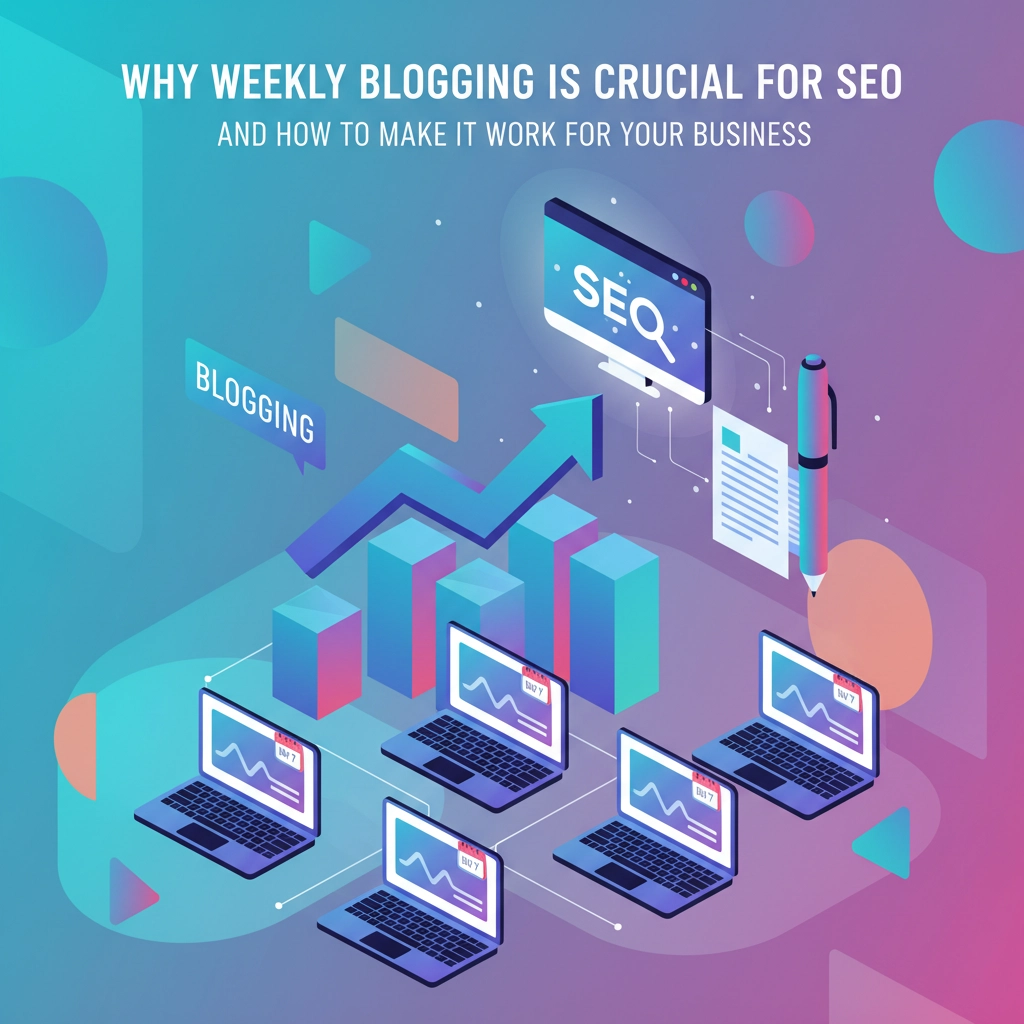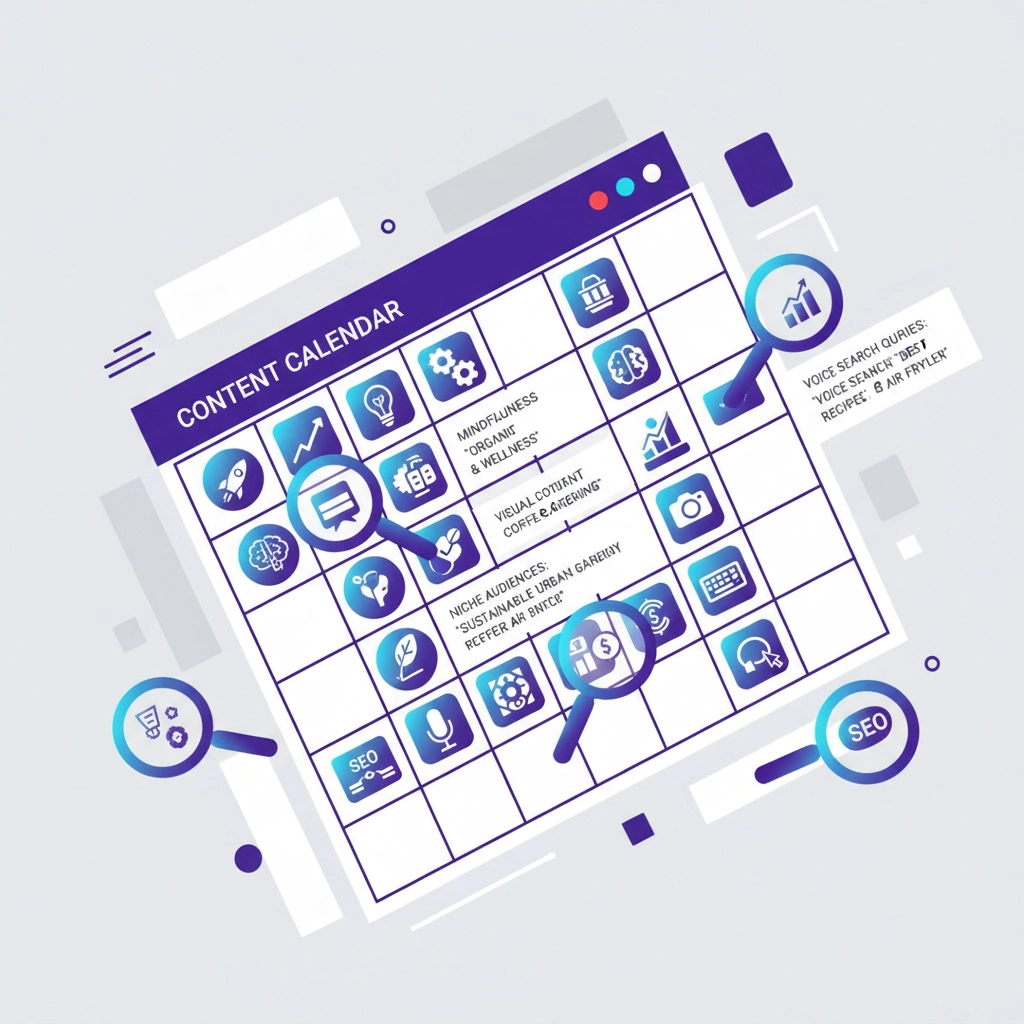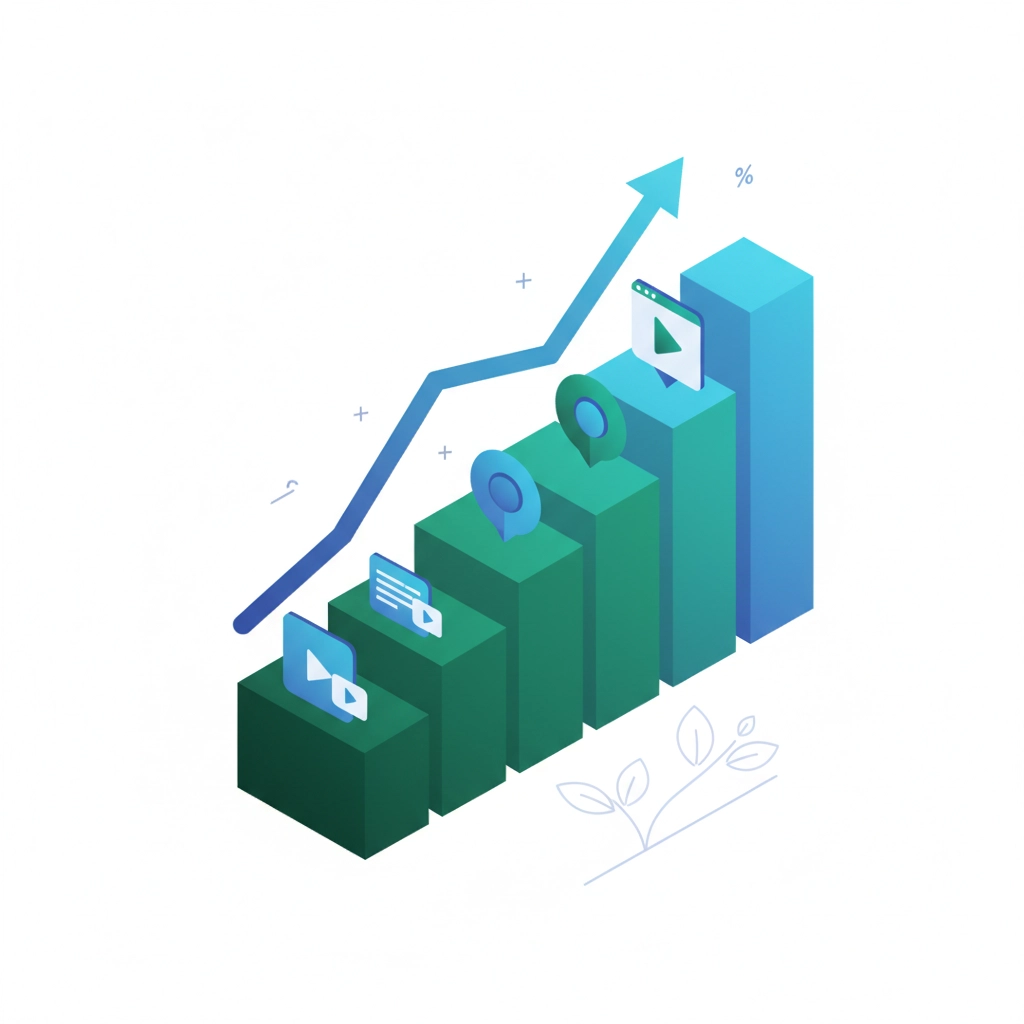
Most businesses understand they need content marketing, but few realize the specific power of weekly blogging for search engine optimization. Publishing fresh content every week isn’t just about staying visible: it’s about systematically building your website’s authority, expanding your keyword footprint, and training Google to recognize your site as a reliable, active resource.
The data is compelling: businesses that blog consistently receive 55% more website visitors than those that don’t. But beyond the traffic numbers lies a deeper SEO strategy that can transform your online presence and drive measurable business growth.
How Weekly Blogging Transforms Your SEO Performance
Enhanced Crawl Frequency and Faster Indexing
Search engines operate on predictable patterns when they encounter consistent publishing schedules. When you publish blog content every Wednesday, for example, Google’s crawlers learn this pattern and begin visiting your website around that same time each week. This predictability gives you a significant advantage over competitors with sporadic content updates.
Without regular publishing, Google crawler visits remain random and unpredictable. Your new pages might sit unindexed for weeks or months. With weekly blogging, you’re essentially training Google to prioritize your website, resulting in faster indexing of new content and improved visibility in search results.
The technical benefit extends beyond timing. Each new blog post creates additional entry points for search engine crawlers, expanding the pathways through which Google discovers and evaluates your website’s content architecture.

Systematic Keyword Expansion and Long-Tail Opportunities
Every blog post represents a new indexed page with the potential to rank for different search terms. Weekly publishing allows you to systematically target various customer questions, industry topics, and long-tail keywords that your competitors might overlook.
Long-tail keywords: specific, multi-word phrases: account for approximately 70% of all Google searches. These queries typically demonstrate higher purchase intent because users are searching for specific solutions rather than general information. A weekly blogging schedule enables you to methodically address these specific search queries, positioning your business as the comprehensive solution provider in your market.
Consider this strategic approach: instead of hoping one or two pages will rank for competitive terms, you’re building a library of targeted content that captures traffic across dozens or hundreds of related search queries.
Fresh Content Signals and Algorithm Advantages
Google’s algorithms prioritize websites that demonstrate ongoing activity and value creation. Weekly blogging sends consistent signals that your website is actively maintained, current, and relevant to user needs.
This freshness factor influences multiple ranking considerations. Search engines favor websites that regularly update their content, viewing this activity as evidence of authority and relevance. Your consistent publishing schedule demonstrates to both algorithms and users that your business stays current with industry developments and customer needs.
The Business Impact of Consistent Blogging
Traffic Growth and Lead Generation
The relationship between blogging frequency and website traffic is direct and measurable. Each blog post creates opportunities to rank for new keywords, answer customer questions, and attract visitors who might never have discovered your business otherwise.
Weekly blogging compounds this effect over time. After six months of consistent publishing, you’ll have created 26 new opportunities to appear in search results. After one year, that number doubles to 52 additional indexed pages, each potentially driving targeted traffic to your website.
More importantly, blog traffic tends to convert better than general website visitors because readers arrive seeking specific information or solutions. They’re already engaged with your content and expertise before considering your services.

Authority Building and Trust Development
Regular blogging establishes your business as a knowledgeable industry resource. When potential customers search for information and consistently find helpful answers on your website, you build trust and credibility before they ever contact you directly.
This authority development serves multiple business functions. It reduces the sales cycle because prospects arrive pre-educated about your expertise. It differentiates your business from competitors who lack comprehensive content resources. It also creates opportunities for referrals and backlinks from other industry websites.
Quality vs. Quantity: Finding the Right Balance
While weekly publishing provides clear SEO benefits, content quality remains the foundation of effective blogging strategy. Monthly blog posts that provide genuine, comprehensive value to readers can outrank weekly posts that are mediocre or rushed.
The most damaging approach involves prioritizing volume over substance, resulting in thin, unhelpful content that neither serves readers nor improves rankings effectively. Search engines and visitors prioritize finding proper answers to their questions over publication frequency.
The Strategic Middle Ground
The optimal approach balances consistency with quality through careful planning and resource allocation. Two to four blog posts per week represents the ideal frequency for most businesses, providing SEO benefits while maintaining content standards.
At minimum, a single weekly blog post delivers immediate benefits. You should notice marked improvements in crawl rate and targeted traffic within two to three months of consistent publishing.
Practical Implementation Strategies
Content Planning and Keyword Research
Successful weekly blogging begins with strategic planning rather than reactive content creation. Develop a carefully researched list of keywords relevant to your business and structure all topics, titles, and headings around these terms.
Focus specifically on keywords that drive targeted traffic to your website. Ranking for random terms generates visibility without business results. Your content strategy should align with actual customer questions and search behavior in your market.
Create a content calendar that addresses frequently asked questions from your existing customers. This approach ensures relevance while capturing search traffic from prospects asking those same questions online.

Technical Foundation Requirements
Maintain a standard WordPress installation with themes that don’t obstruct Google’s crawler access. This ensures you don’t need complex technical SEO implementation: the foundation works automatically with consistent publishing.
Optimize your blog posts with descriptive URLs, relevant meta descriptions, and proper heading structures. These technical elements support your content strategy without requiring advanced SEO expertise.
Content Distribution and Amplification
Link your blog posts from social media platforms to amplify their reach and signal additional authority to search engines. Use your blog content strategically in email marketing campaigns with clear calls-to-action to drive conversions.
Internal linking between blog posts creates additional pathways for both users and search engines to discover your content. This interconnected approach strengthens your website’s overall SEO performance.
Making Weekly Blogging Sustainable
Resource Planning and Budget Considerations
If hiring professional content writers feels expensive for daily publishing, a weekly schedule provides a cost-effective entry point that still delivers meaningful SEO results. The critical factor is consistency combined with quality and relevance.
Consider developing content templates and processes that streamline your publishing workflow. Standardized approaches reduce the time investment while maintaining quality standards.
Measuring Success and ROI
Track specific metrics that demonstrate blogging ROI: organic search traffic growth, keyword ranking improvements, and lead generation from blog content. These measurements justify continued investment and guide strategy refinements.
Monitor which blog topics generate the most engagement and conversions. This data informs future content planning and helps you focus resources on the highest-impact publishing strategies.

Long-Term SEO Benefits and Business Growth
Weekly blogging creates compounding returns over time. Each published post continues working to attract search traffic months and years after publication. This cumulative effect means your content investment grows more valuable with consistent execution.
The authority and trust you build through regular, helpful content publishing extends beyond search rankings. It influences customer decision-making, referral generation, and overall market positioning in ways that directly impact business growth.
Businesses that commit to weekly blogging for 12 months typically see dramatic improvements in search visibility, lead quality, and overall digital marketing performance. The strategy requires patience and consistency, but the results justify the investment through measurable business growth.
Your website becomes a comprehensive resource that both search engines and customers value. This positioning creates sustainable competitive advantages that extend far beyond individual blog posts or search rankings.
Ready to transform your SEO performance with strategic weekly blogging? The key is starting with a solid plan and maintaining consistency over time. Your business deserves the increased visibility, authority, and lead generation that effective content marketing delivers.
Need fresh blog content that helps your rankings? Email robert@digitaltrafficfactory.com or call 203-217-9496 and let’s boost your SEO together!
